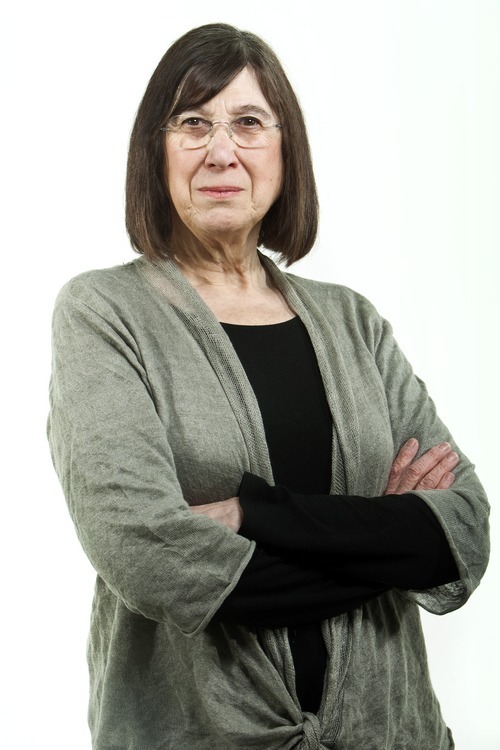This is an archived article that was published on sltrib.com in 2012, and information in the article may be outdated. It is provided only for personal research purposes and may not be reprinted.
When the Homestead Act of 1862 ignited America's can-do spirit by offering undeveloped federal land west of the Mississippi River to private citizens, thousands of potential homesteaders traveled great distances to stake a claim, "prove up" (improve) their property and begin new lives. One Utahn, whose life was as colorful as her name was long, didn't have to travel far to find her piece of heaven on earth.
In 1914, 40-year-old Josie Bassett McKnight Ranney Williams Wells Morris — four times divorced and once a widow — proved up land in the Blue Mountain Cub Creek region, 10 miles east of Jensen in Uintah County.
The oldest of five, Josie was born in Arkansas but raised in Brown's Hole, a remote valley tucked away in northeastern Utah bordering south central Wyoming and northwestern Colorado.
Her father, Herb Bassett, was a gentle, educated man drawn West by his brother, Sam, who extolled the area's unparalleled beauty. A former 49er, Sam believed the clean mountain air would cure his long-suffering brother's asthma.
Josie's mother, Elizabeth, was a Southern belle and feminist who rode sidesaddle. She was a go-getter who could, and apparently did when need be, "rustle" for their livelihood.
"My mother took the lead in our family and was handy with a shotgun," Josie said in Everett L. Cooley's 1959 interview archived at the University of Utah Marriott Library. When the post office was built in Brown's Hole, Mrs. Bassett declared "Brown's Park" a more suitable name. It stuck.
Brown's Park was an isolated melting pot, a rarity of ethnicity and ethics stirred by personal interpretations of the law. It was a haven for mountain men, ranchers, cowboys, rustlers and outlaws. The Bassett home, outfitted with a private library, stringed instruments and a portable organ, welcomed all visitors, no questions asked.
Educated at St. Mary's of the Wasatch in Salt Lake City, Josie thrived in the wilderness. An excellent marksman, she was independent, outspoken and feminine — a cause célèbre for controversy, myths and legends.
Josie was a teenager when she met Butch (George) Cassidy, who worked or hid out at the Bassett ranch, and some thought they were lovers. "My father thought he was nice to talk to," she said.
In 1892, Elizabeth died from a burst appendix and Josie married rancher Jim McKnight. They had two fine sons before she drove him out of the house at gunpoint.
"He wasn't bad, but I'd rather live with the coyotes than a drunken man," she said. One write-up intimated she killed him. "He needed something," she acknowledged, adding mental cruelty to her divorce papers.
Her fourth husband, "a good farmer and a good man as ever lived," departed in a drunken stupor. Strychnine residue found in the bottom of a coffee mug sparked an inquiry. The grieving widow went to court and was acquitted.
When another husband mistreated her horse, she gave him 15 minutes to leave. He took five.
Settling in at Cub Creek, Josie cleared brush, camped out, chopped wood, built her cabin, tended to her animals and gardens and collected mail in Jensen by horseback. In 1924, she rebuilt her home and cut her hair short. Saving long skirts for weddings and funerals, she took to wearing bib overalls or trousers.
Hosting a homeless family during the Depression, Josie spent the winter in a dugout. When Prohibition struck, she operated a still and bootlegged whiskey. Taken to court for "cattle rustling," she dressed up and survived, thanks to a hung jury. Eight years later, the 70-year-old grandmother took third place in a horse race.
"I've never been thrown off once," she said.
Josie lived on her homestead for nearly 50 years beloved and aggrieved by neighbors. The progressive woman never had electricity and never wanted it, rarely aged, encouraged physical activity and was steady on her feet. In December 1963, she tripped, broke a hip and dragged herself indoors. The stalwart nonagenarian held on until May.
Eileen Hallet Stone is an oral historian. She can be reached at ehswriter@aol.com. Additional sources: Doris Karren Burton's Dinosaurs and Moonshine and BLM Cultural Resources. Special thanks to Marriott Library's Paul Mogren.



